Sfogliatelle
Intrigued by Sfogliatelle, those ethereal pastries famed for their flaky layers and creamy ricotta filling?
This recipe unlocks the secrets of creating these iconic Neapolitan treats at home, and the results – a wonderful combination of crisp crust and smooth filling – are well worth the effort.

Neapolitan Sfogliatelle are made with a special dough stretched paper thin and then spread with lard before being rolled up, creating a multi-layered, crispy crust. The unique filling of semolina and ricotta flavored with orange and spices is fragrant, creamy, and thick.
Italians would never make these pastries at home, but they have an Italian bakery just around the corner. Just like Cannoli and Boccanotti, these are quite a project. The satisfaction and taste make it all worthwhile!
Why you’ll love this recipe
- Challenge: Sfogliatelle are known for having many crispy layers and being rather difficult to master. This recipe unlocks all the secrets to creating this complex but rewarding pastry.
- Authentic Italian: Recreate all the flavors of Naples in your own kitchen with this homemade pastry.
- Showstopper: Impress family and friends with these beautiful and delicious pastries.
- Freshness: Truly good sfogliatelle are hard to find outside of Italian bakeries. With this recipe, you can make your own any time you want.
For complete ingredient quantities and full instructions, please scroll to the printable recipe card at the bottom of the page.
Ingredients
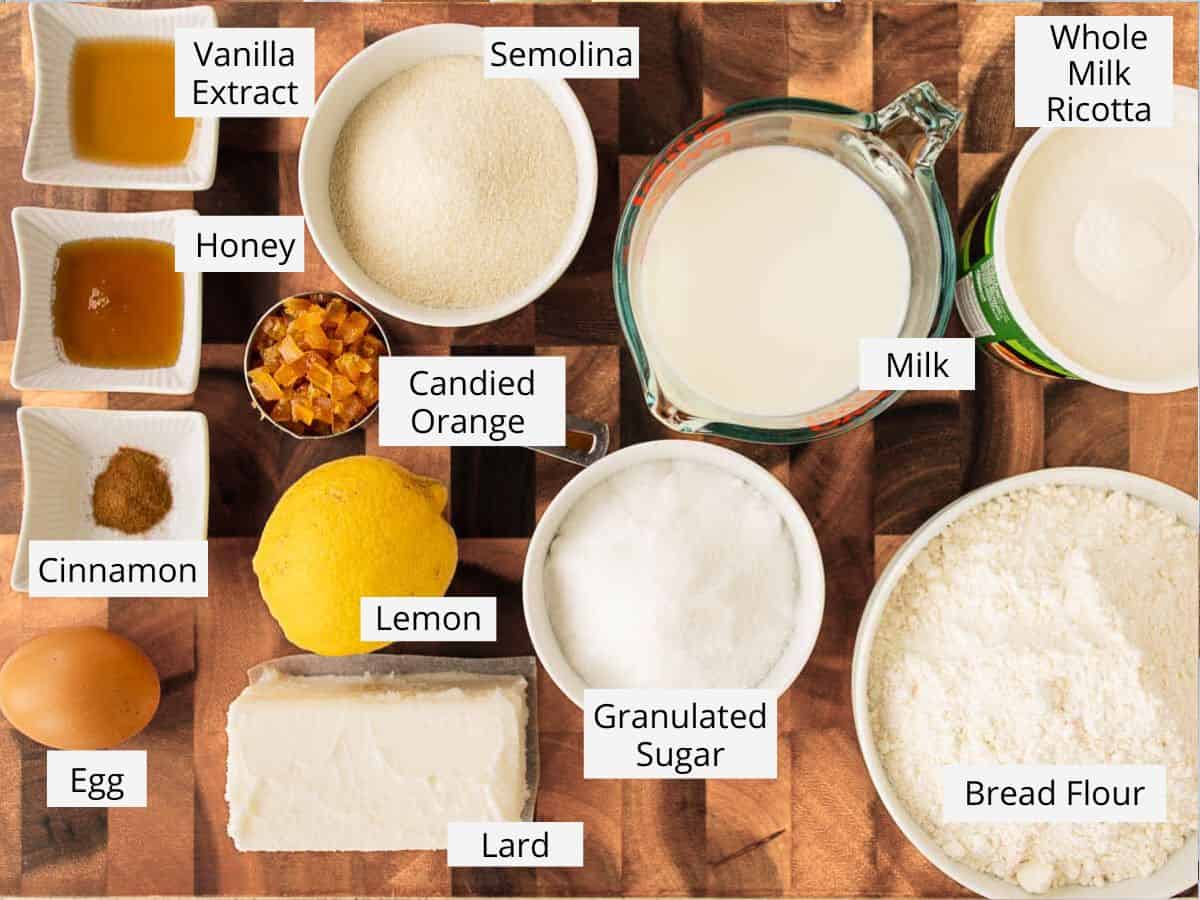
As well as sugar, eggs, and milk, you’ll need some ingredients you might not otherwise keep.
- Bread flour – Easily available in most supermarkets, bread flour has more gluten, which means the dough will have better stretch.
- Honey – A little honey will sweeten the dough and help it brown in the oven. Use any honey that you enjoy or have in the pantry.
- Lard – If you’ve never purchased lard, you’ll find it in most grocery stores near the butter. Lard is 100% animal fat, more often than not pork fat.
- Semolina – The variety needed for this recipe is coarser than semolina flour. It’s similar to yellow cornmeal in texture. You can use Cream of Wheat instead, so long as it’s not a flavored variety. Alternatively, you may need to look in a specialty store or purchase online.
- Whole milk ricotta – Choose ricotta cheese with no additives and one that is creamy and smooth.
- Flavorings: Candied orange peel, vanilla extract, ground cinnamon, and lemon – Check the grocery store, but more likely, candied orange peel is something you’ll need to purchase from a specialty store. The remaining flavorings are available in grocery stores.
See recipe card for quantities.
Instructions
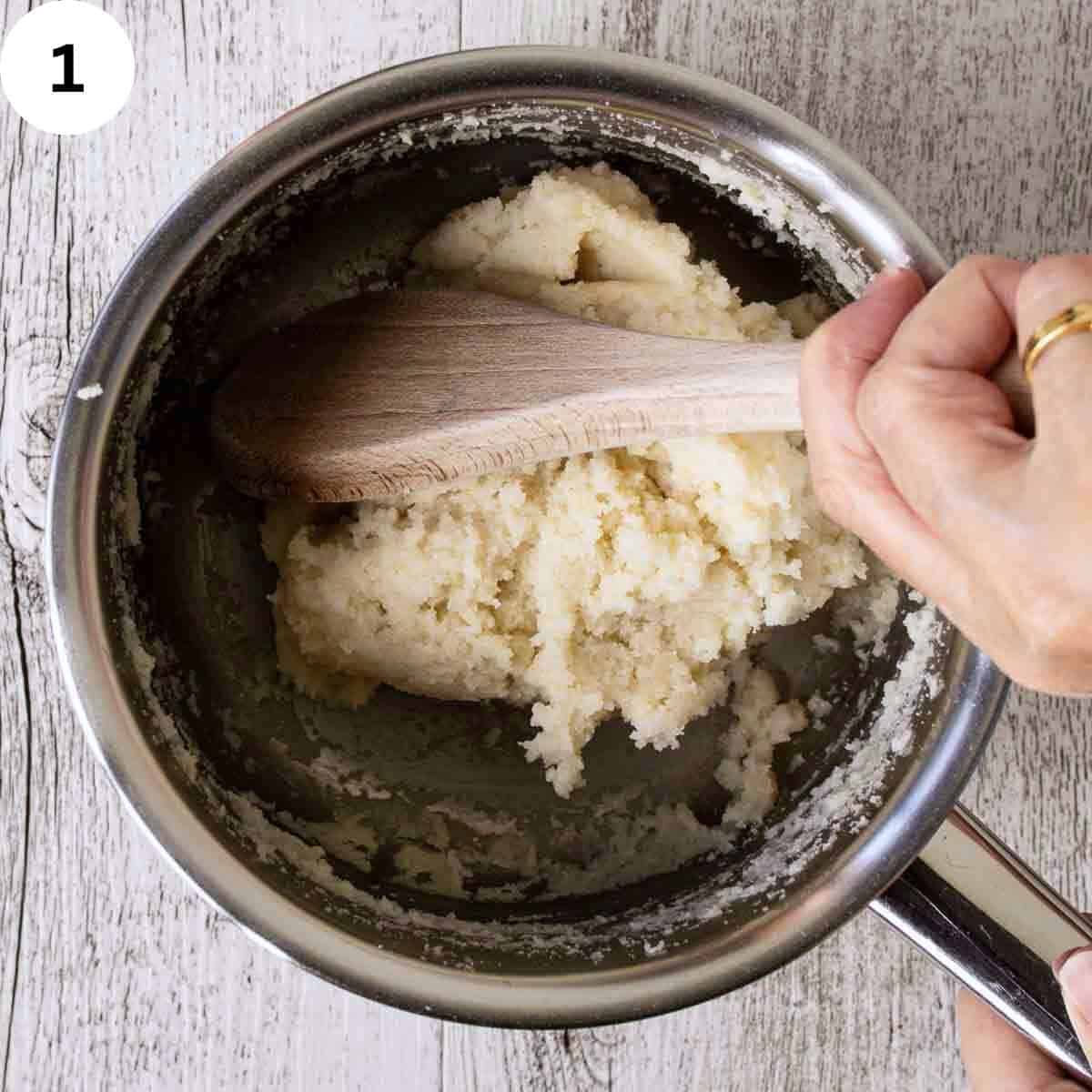
Prepare the semolina (cream of wheat) and allow it to cool.
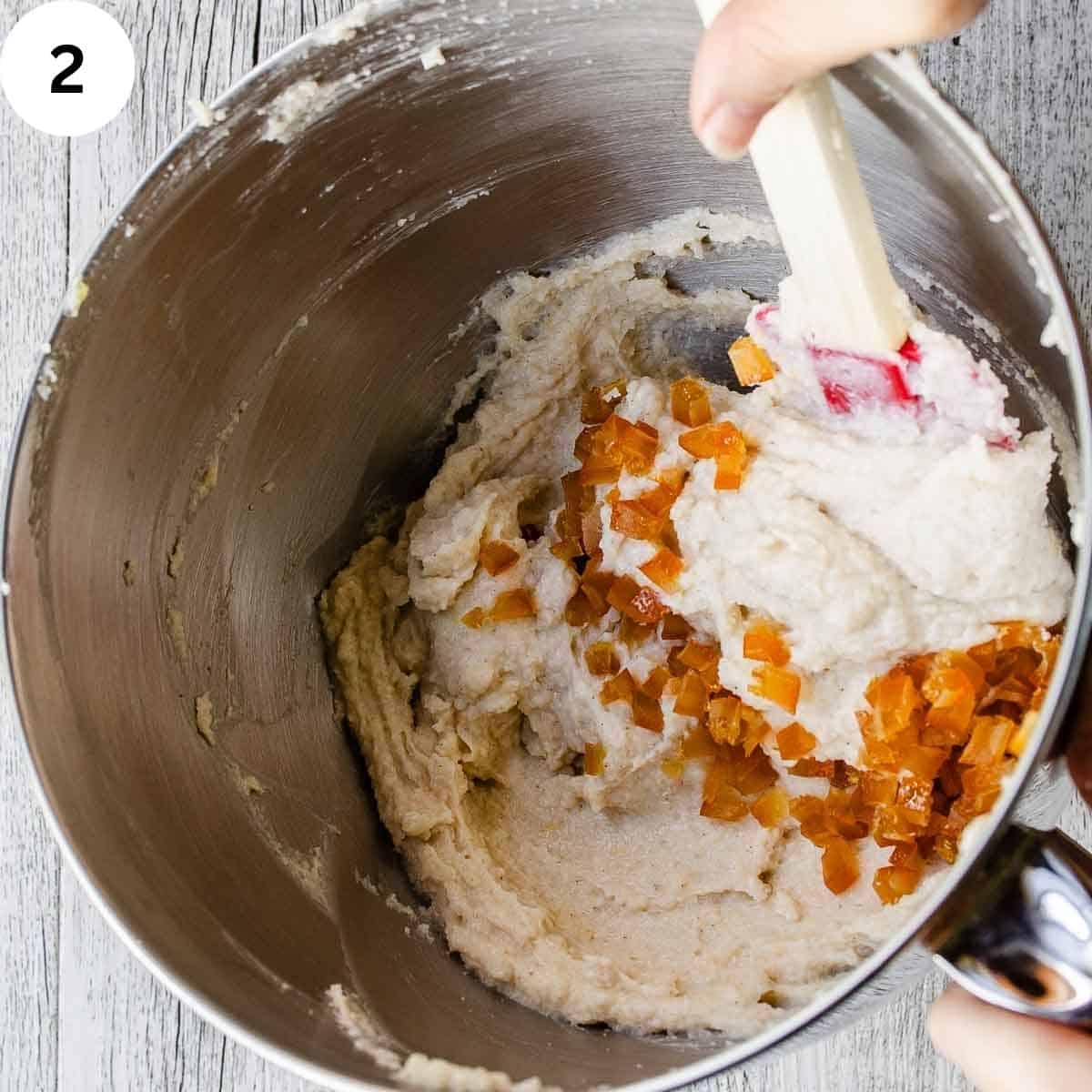
Combine with the remaining filling ingredients until smooth. Refrigerate until needed.
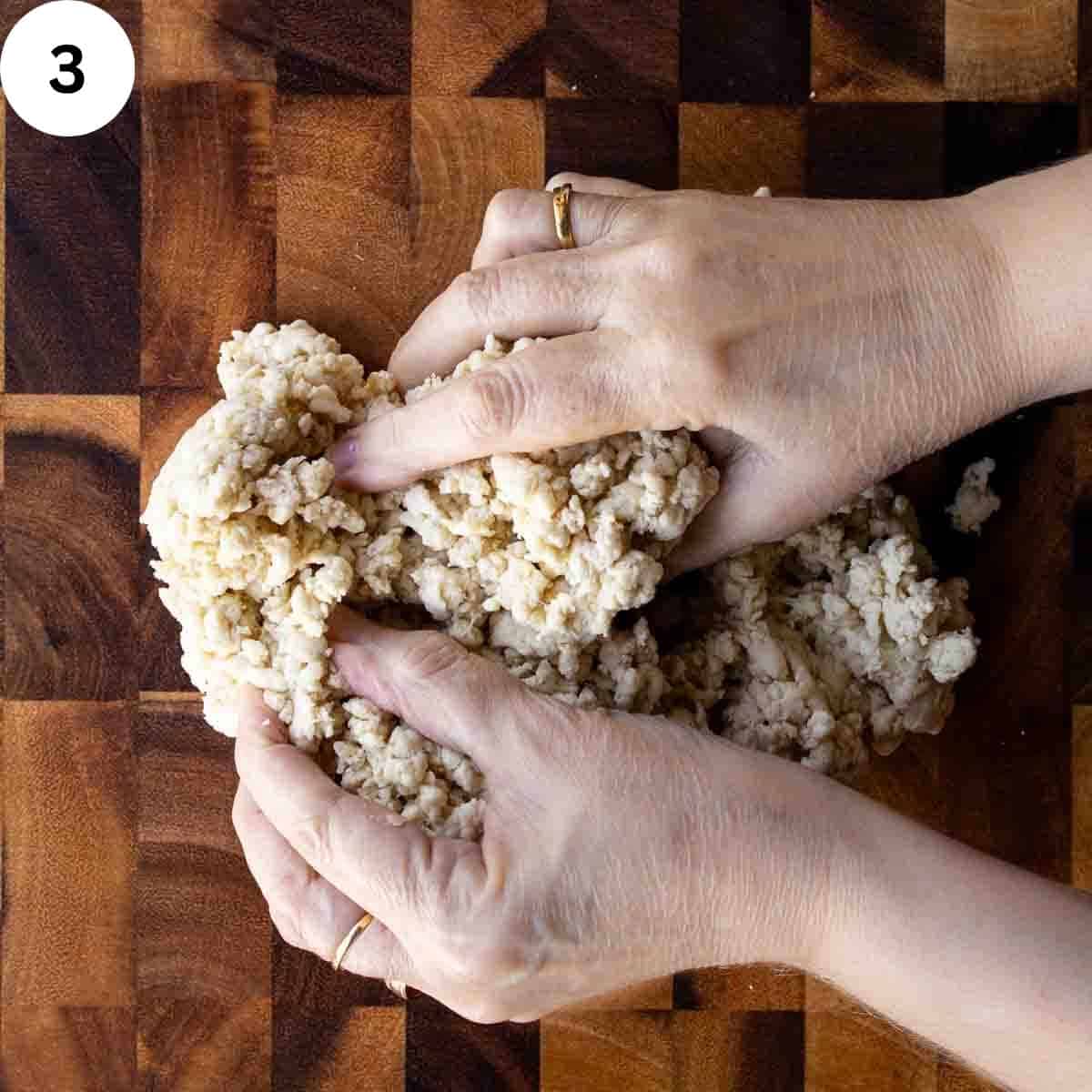
Combine flour, water, honey, and salt. Knead, wrap, and refrigerate for at least 2 hours.
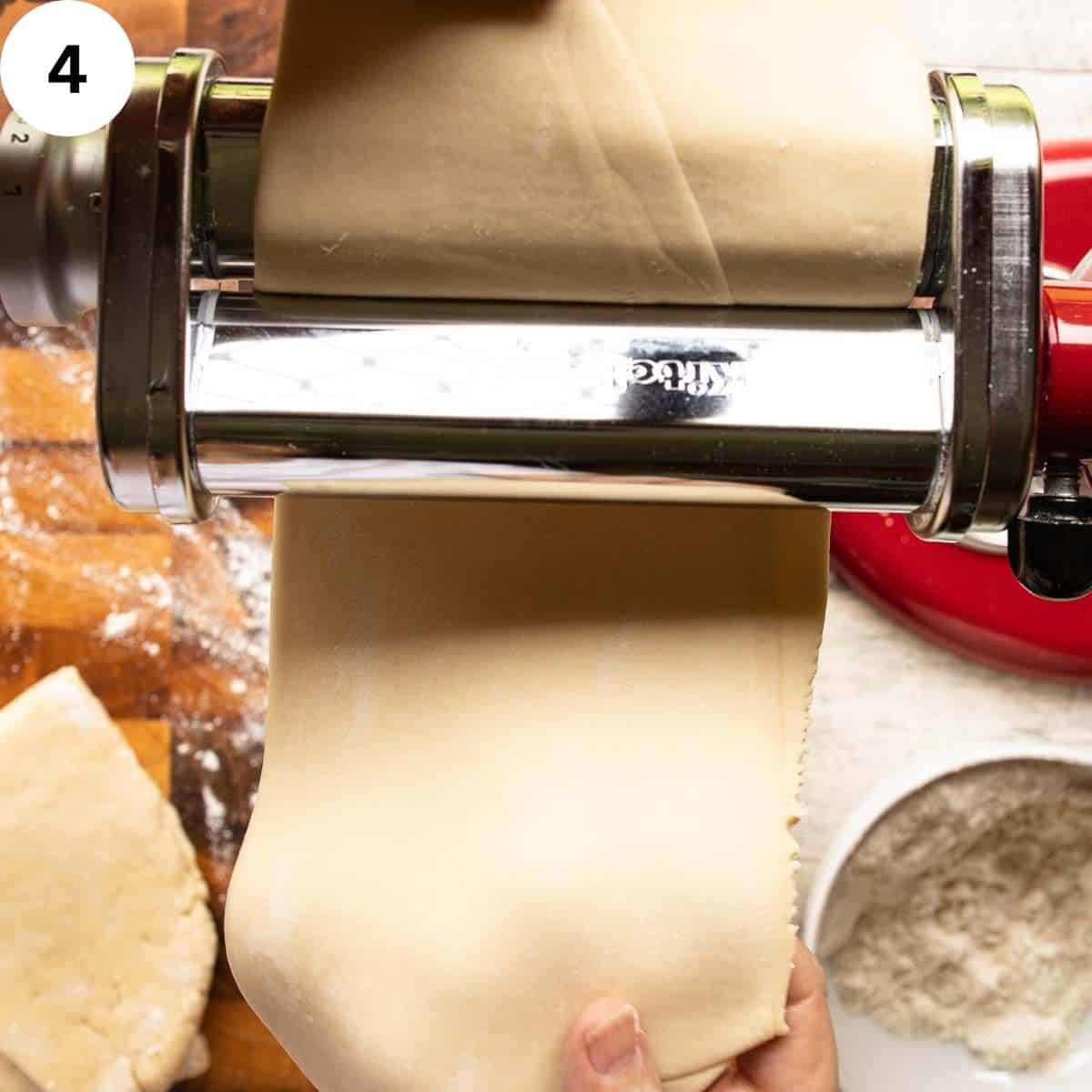
Divide the dough, and roll each piece on a pasta machine set at the widest setting until smooth and thin.
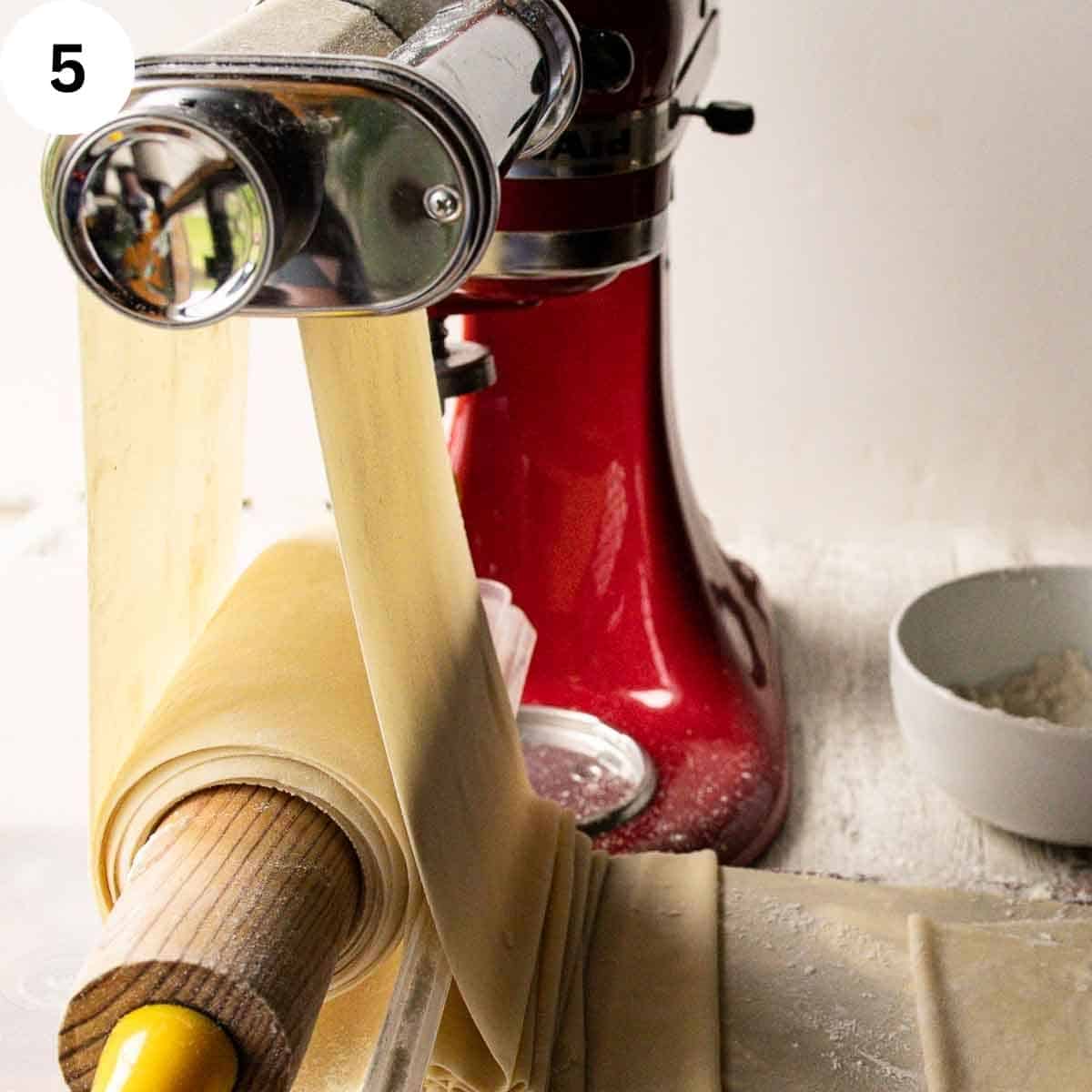
As the dough is thinned, it will become very long. Roll it around a rolling pin to make thinning the dough manageable.
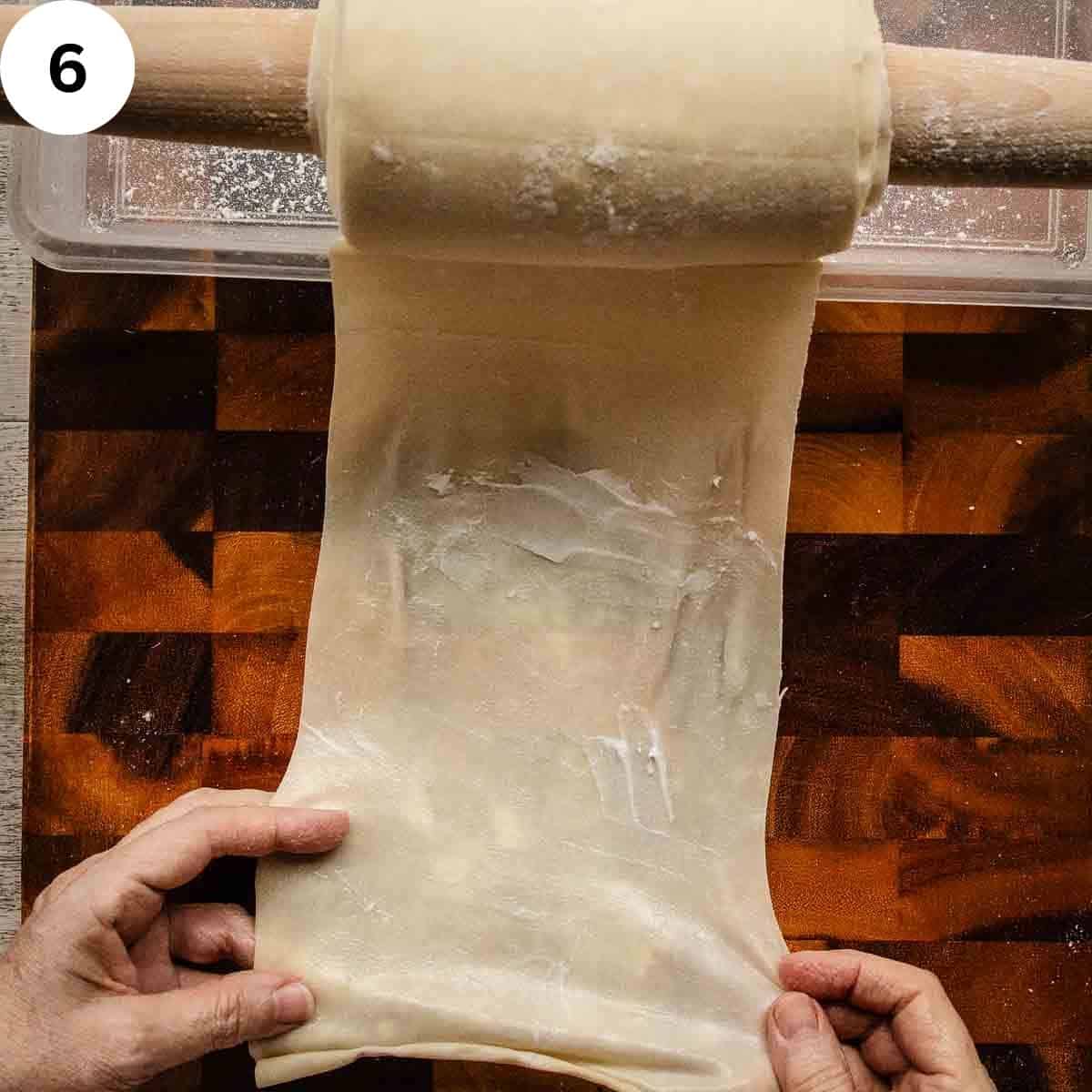
Smear the dough sheet with lard, stretch it thin, and roll it up tightly.
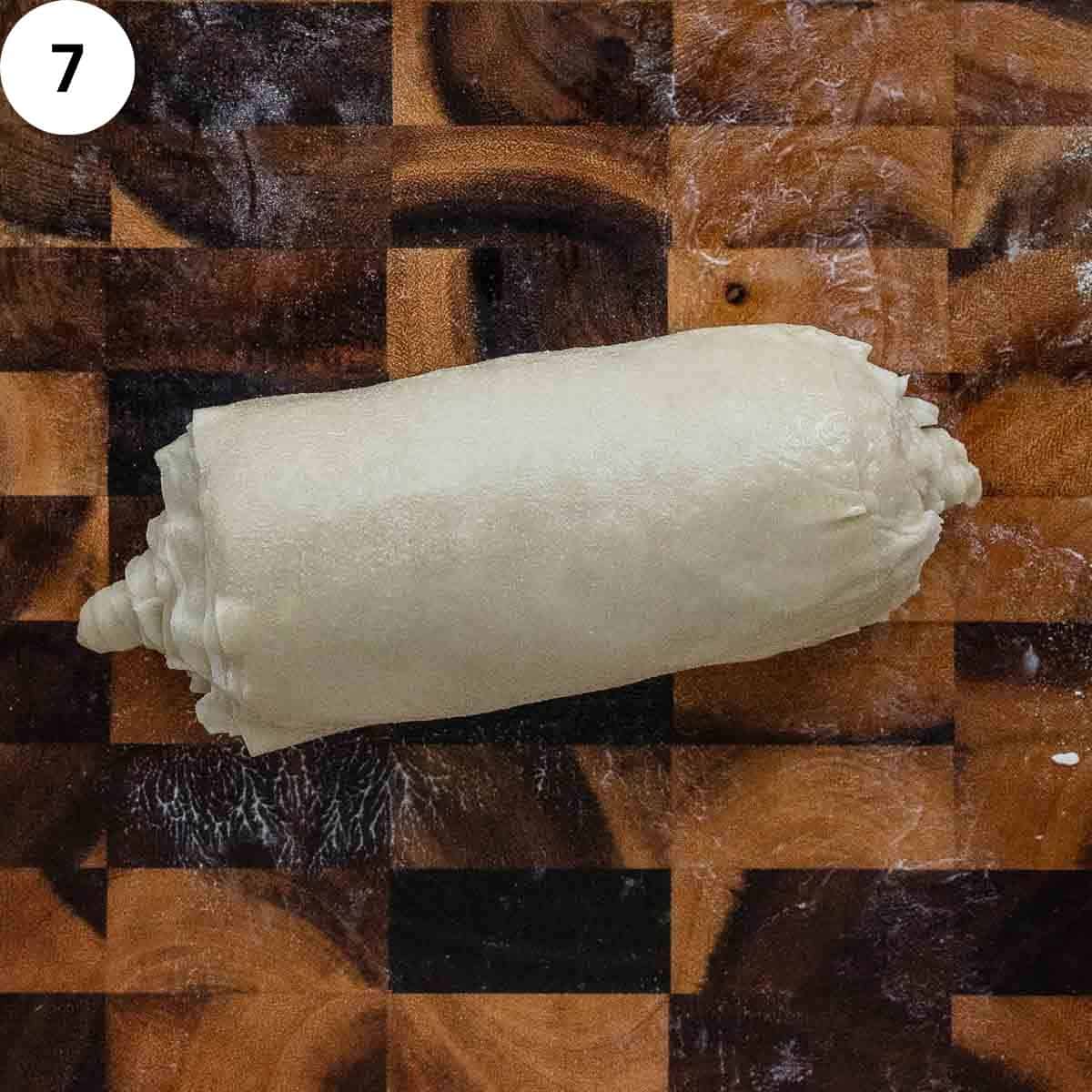
Spread lard over the log, gently stretch to release air pockets, form a coil, and chill for 30 minutes.
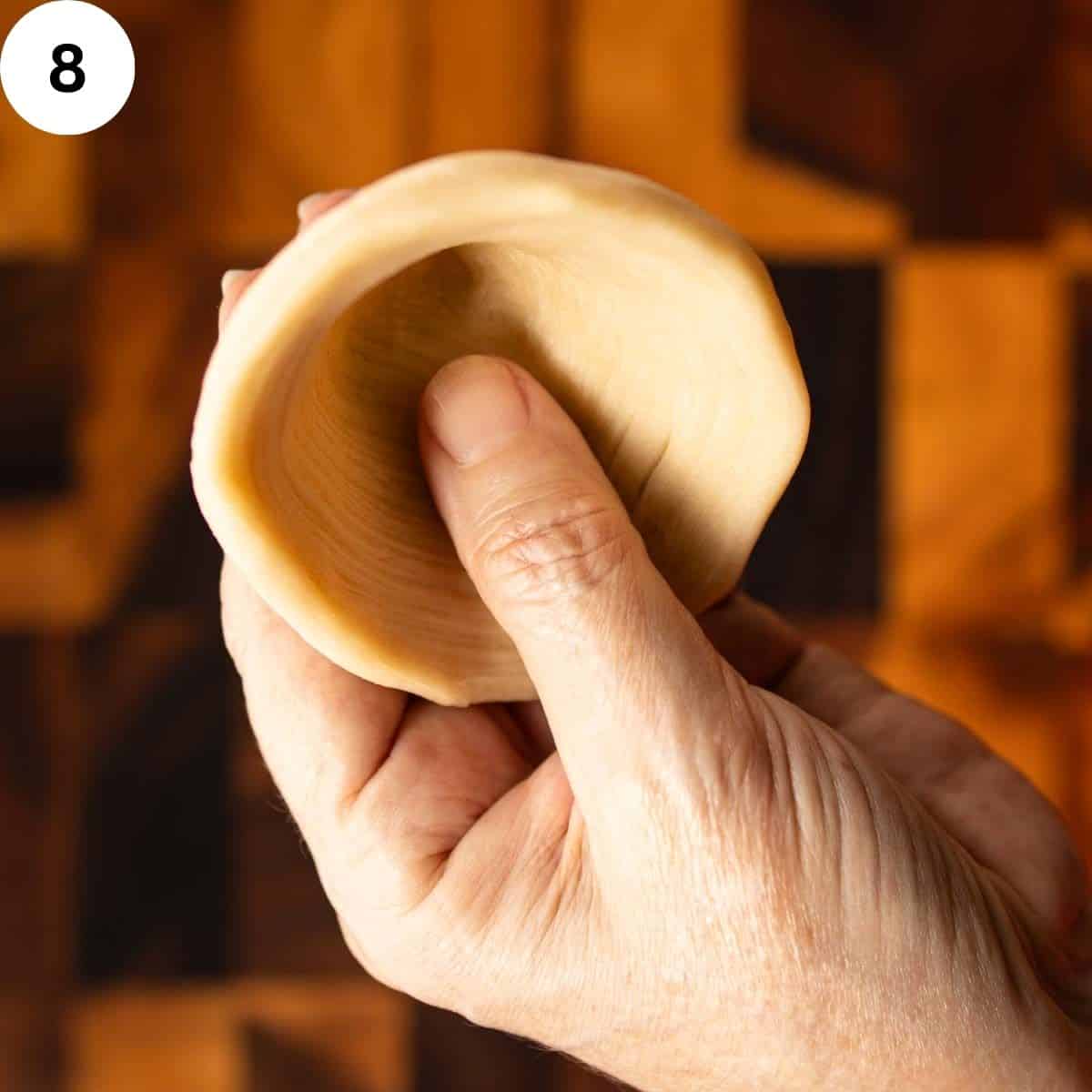
Preheat oven to 400°F (200°C). Slice the chilled log and carefully shape each slice into cones.
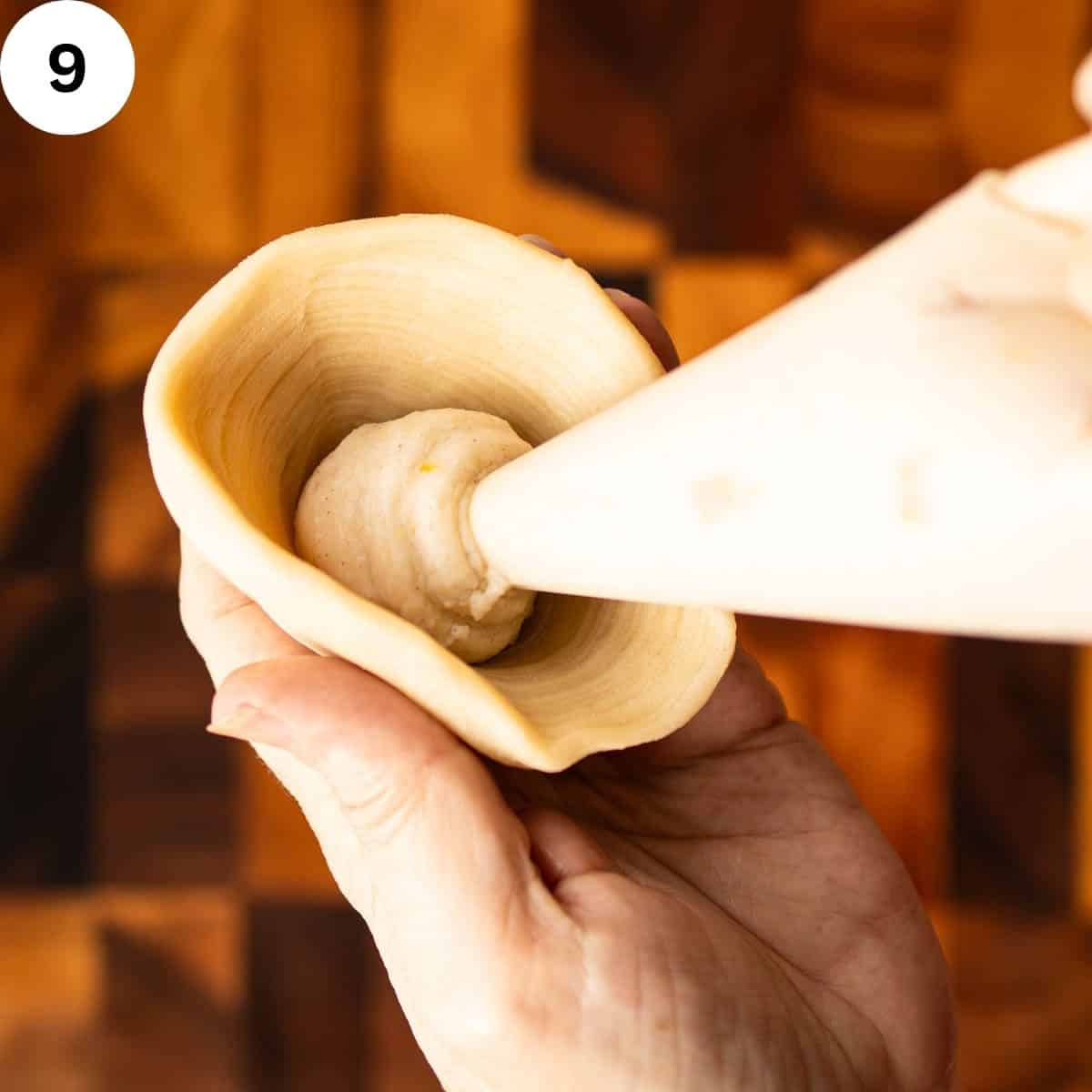
Fill with ricotta mixture using a piping bag or spoon.
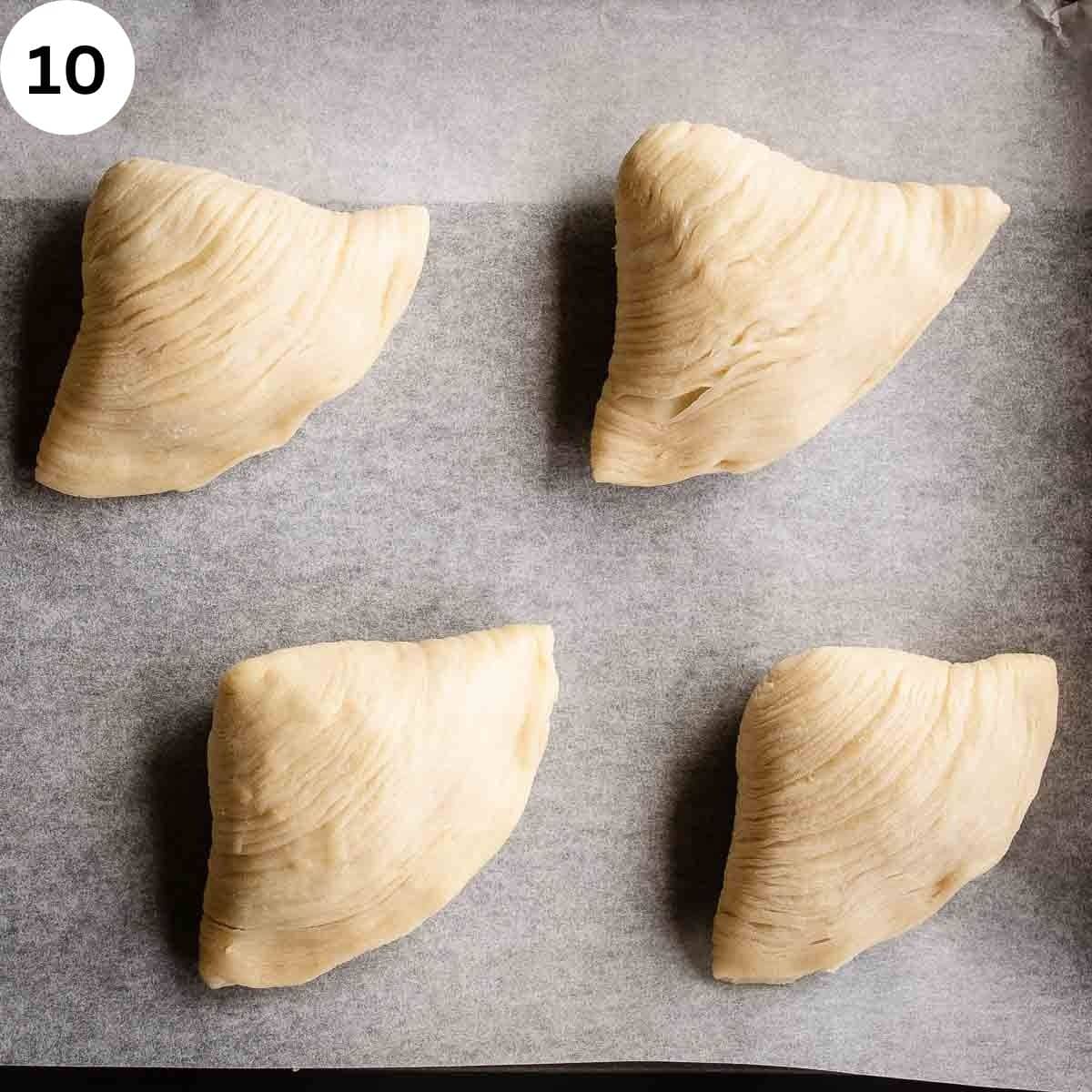
Place on lined baking sheets and bake for 20-25 minutes until golden brown.
Hint: This Italian sfogliatelle recipe will be easier if the dough and the filling are made in advance. The filling can be made three days in advance and stored in the fridge in an airtight container. Make the dough up to and including stretching the dough log (step 7), then wrap well in plastic wrap and refrigerate for two days or freeze for up to one month (thaw before proceeding).
Substitutions
- Bread flour – instead of bread flour, you can use all purpose flour.
- Lard – substitute half of the lard for unsalted butter or shortening instead. Don’t use all butter; the result won’t be as good.
- Milk – water can be used instead of milk to make the semolina pudding.
Variations
- Floral – add a splash of orange flower water to the filling for a floral note.
- Modern Twist – add a little ground cardamom for a twist on the classic version.
Equipment
This recipe requires a pasta machine to roll the pastry thinly before spreading it with lard and stretching it further.
Storage
Sfogliatelle should be served fresh and warm, but if you have leftovers, store them in an airtight container in the refrigerator. Reheat the leftover sfogliatelle in a preheated oven for a few minutes to refresh and crisp.
The sfogliatelle dough can be frozen for up to one month. Wrap the dough well in plastic before popping it into a large zip-lock bag. Thaw in the fridge overnight.
To freeze, arrange unbaked sfogliatelle on a non-stick, parchment-lined baking sheet and freeze until solid. Once frozen, the pastries can be put into a zip-lock bag and kept in the freezer until needed. Bake the pastries from frozen, allowing extra baking time.
Top tips

- The dough is the trickiest part of this recipe. It needs to be smooth and elastic so that it stretches easily. Use a pasta machine to smooth and flatten the dough.
- Once the dough is smooth and has been passed through the pasta machine several times., begin to thin by reducing the width of the rollers. Roll the dough as thinly as possible.
- As it thins and the sheet becomes longer and longer, roll up the dough like a jelly roll or Swiss roll, dusting it with flour to prevent it from sticking to itself.
- Cut the dough into four if one very long sheet of dough seems difficult. Roll each portion out separately.
- Don’t be shy when smearing the lard on the thinly rolled dough. The lard separates the many layers of dough and ensures the pastry becomes crisp in the oven.
FAQ
Lobster tail pastries use the same crust but not the same filling. Lobster tail pastries are filled with cream puff dough before baking, which expands and creates a space within the crust. This is filled with ricotta cream or diplomat cream. Lobster tails are usually larger than sflogliatelle which has a baked-in filling.
Sfogliatelle is pronounced like this – sfohl-ya-TEL-le.
This iconic pastry of Naples is said to have been created by a cloistered nun who didn’t want to waste some semolina soaked in milk. She mixed it with ricotta and sugar. She added flavorings and used the mixture to fill a pastry that resembled a monk’s hood. Her creation was so popular with the other nuns that they soon began selling them to the public.
Over time, the pastry was refined to become what we know today. Whether it was the nuns or someone else who did that, we don’t precisely know.
Neopolitan cuisine has two sfogliatelle: riccia (this one) with a flaky, layered crust and frolla, featuring a simpler, crumbly shortcrust (pasta frolla). Both share the same delicious filling.
Serving Suggestions
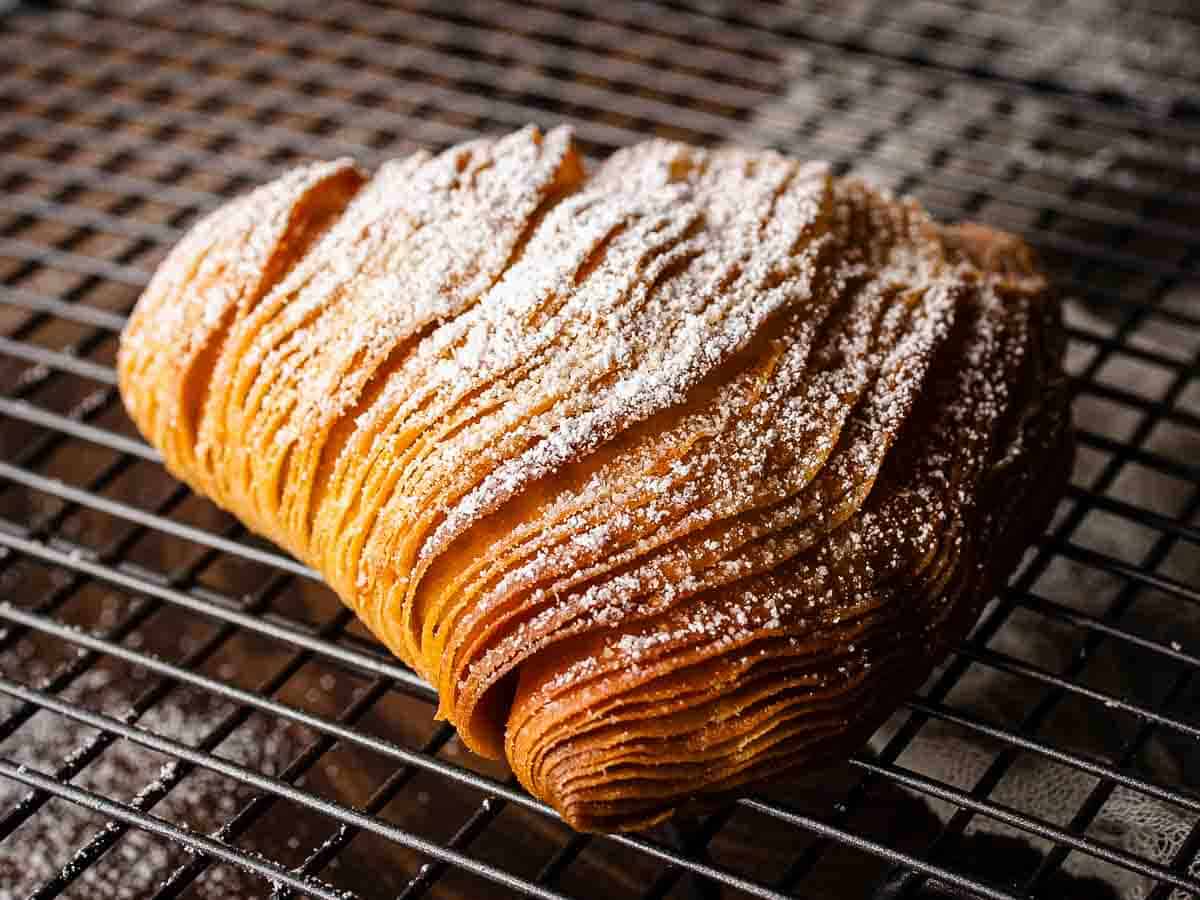
Italians love a sweet breakfast, and these sfogliatelle and maritozzi are favorites in southern Italy. While enjoying a homemade sfogliatella for breakfast, be sure to give my sourdough French toast recipe a try; everybody will love it!
Like my Zuppa Inglese, sfogliatelle are a classic Italian favorite and loved by many.
Did you know that this recipe is from Naples in southern Italy? This area is also the original home of pizza and pizza fritta. Pizza Fritta, or “fried pizza,” is one of the most amazing Italian street foods you can have. With my recipe, you can create it at home and be transported to the streets of Naples!
Related
Italian Pastry Cream
Italian Butter Cookies
Made this recipe?
Please let me know if you liked it by leaving a ★★★★★ star rating and a review below. And remember to subscribe to my newsletter – it’s free!

Sfogliatelle Recipe
Ingredients
Dough
- 4 cups (500 grams) bread flour
- 7 ounces (200 mls or 1 cup plus 4 teaspoons) water
- 1 tablespoon honey
- 1 teaspoon salt
- 6 ounces (180 grams) lard
Semolina-Ricotta Filling
- 1 cup (240 mls) milk
- ¾ cup (150 grams) granulated white sugar
- ⅔ cup (115 grams) fine semolina or cream of wheat
- 1 ½ cups (375 grams) whole milk ricotta
- 1 large egg yolk
- 2 teaspoons (10 ml) pure vanilla extract (or the seeds of one pod and 1 teaspoon of extract)
- ½ teaspoon ground cinnamon
- ¼ cup finely chopped candied orange peel (commercial or home-made)
- zest of 1 lemon
Instructions
Semolina and Ricotta filling
- Combine the milk and the sugar in a medium saucepan. Bring to a boil, then lower the heat and slowly add the semolina (or cream of wheat), whisking quickly to avoid lumps.
- Cook, stirring often, until the mixture is smooth and thick, about 2 minutes. Spread the mixture onto a lined baking sheet, about ½ inch (15 mm), to cool.
- When cool, break into pieces and place into the bowl of your stand mixer, fitted with the paddle attachment (or a food processor). Add the ricotta cheese, egg yolk, vanilla extract, and ground cinnamon. Beat until very smooth and creamy.
- Stir in the candied orange peel and lemon zest. Scrape into a container, place plastic wrap directly onto the surface and refrigerate until needed (up to 3 days).
Pastry
- Combine the flour, water, honey and salt in a bowl, or use your stand mixer with the paddle attachment. The dough will be very dry but it is supposed to be very dry.
- Turn this onto a clean work surface and knead the dough together, bringing in all the dry bits.
- Press and roll out with a rolling pin to about 1 inch (2½ cm) thickness. Then wrap tightly in plastic wrap. Refrigerate and rest for 2 hours or overnight.
- At this point, get your pasta roller out and ready. Roll out the dough to about ⅓ inch (10 mm) and pass through your pasta machine at the widest setting. I find it much easier to cut my dough in half and work ½ at a time for this step. Fold the dough in half after each pass also change the direction of the dough occasionally. After about 15 passes the dough should be very smooth.
- The two pieces of dough can be pressed together and rolled in one sheet. This can become quite difficult to manage but can be done.
- I prefer to divide the dough into 4 equal pieces. Working with one piece of dough at a time (cover the other pieces with a towel or plastic wrap), lightly flour one piece and pass it through the pasta roller set at the widest setting. Try to get the dough as even as possible. The goal is an even rectangle strip, about 4 inches (10 cm) in width. If needed, fold it over on itself a few times until you get an even strip. Once even, pass the dough through every setting, ending with the highest.
- Place the thinned dough on a clean work surface. The dough can be rolled around a rolling pin to make the length more manageable.
- Smear the dough liberally with the lard. I do about a 8 inch (20 cm) section at a time. Gently pull the sides of the dough and stretch it, starting from the middle and going out, until it is about 8 or 9 inches (20 or 23 cm) in width. Begin from the short end and start rolling the dough into a very tight roll. When you start to reach the end of your stretched section, stop and liberally grease up another section, stretching and rolling until all the dough is finished.
- When one strip of dough is finished, roll out another piece of dough as above, then stretch and overlap the end of one to the beginning of the other; continue to pull, stretch, and roll up. Each strip of dough will attach to the roll with the lard. Continue this way until all the pieces are stretched and rolled.
- Spread lard over the entire finished log, and starting in the middle gently run your hands down the log to extend the length another inch (30 mm) or so. This will release any air pockets and tighten the roll. Your finished roll should be approximately 9 or 10 inches (22 or 25 cm).
- Wrap in plastic wrap and chill for at least 2 hours or overnight. The dough may be frozen for up to 1 month, at this time. Defrost it in the refrigerator overnight before using.
Make Sfogliatelle
- Preheat your oven to moderately hot 400°F/200°C.
- Line 2 baking sheets with non-stick parchment paper.
- Remove the dough from the refrigerator, unwrap, and place on a cutting board. Slice off about just under an inch (20 mm) from each end so that they are straight and even. Cut the roll into 16 even slices. Put the semolina-ricotta mixture into a pastry bag or even a zip lock bag with the corner cut off is fine
- Take one slice of dough and place it on your workplace. With the heel of your hand, push out from the center in one direction. Rotate the dough and do this in all four directions. This forms the dough and opens up the layers. Pick up the piece and insert your thumbs on the inside with your forefingers on the outside meanwhile gently stretch the center to make it more into the shape of a cone. You don’t want the layers to actually separate. Holding the cone in one hand, squeeze some of the filling into the cavity so it is full. Lightly push the opening closed. You do not have to seal the opening as the filling is too thick to ooze out during baking
- Place onto the prepared baking sheet. Bake in a preheated 400°F/200°C oven for about 20 to 25 minutes or until they are a deep golden brown.
- Remove from the oven and cool on a rack. These are best served warm with a sprinkling of powdered sugar on the day they are made. To reheat them, just place them in a moderate 350°F/180°C oven for about 5 minutes.
- Kept in the refrigerator these pastry do reheat well so you can enjoy them for several days (if you can resist gobbling them all up!)
- Enjoy for breakfast with an espresso or an after dinner treat.
Notes
- Use high-quality bread flour. Choose a brand for the best results. This flour helps develop the gluten structure, which is crucial for creating flaky layers.
- Don’t be afraid to use flour. Generously dust your work surface and the dough itself as you roll it through the pasta machine and onto your rolling pin. This prevents sticking and ensures those delicate layers stay intact.
- Patience is key for thin dough: Aim for paper-thinness. Start by rolling it out on the widest setting of your pasta machine. Then, gradually work your way up to the thinnest setting. Once thin, gently stretch the dough even wider.
- Tight rolls are important. Use a pulling and rolling motion to achieve a compact cylinder. Imagine pushing the air pockets out with each turn. The tighter the roll, the flakier your sfogliatelle will be.
- Bake until golden brown. Aim for a deep golden brown color. This ensures your sfogliatelle is fully cooked through and has a delightful crispness on the outside.
- Invest in high-quality ricotta for the best results. Look for a brand known for its creamy texture and smooth consistency. This will elevate your filling and eliminate any graininess or watery texture.
Nutritional Estimate Per Serving
Nutritional Disclaimer
Nutritional information is an estimate provided by an online nutrition calculator. For accurate results, it is recommended that the nutritional information be calculated based on the ingredients and brands you use.
This updated and improved recipe was first published here on November 29, 2013.



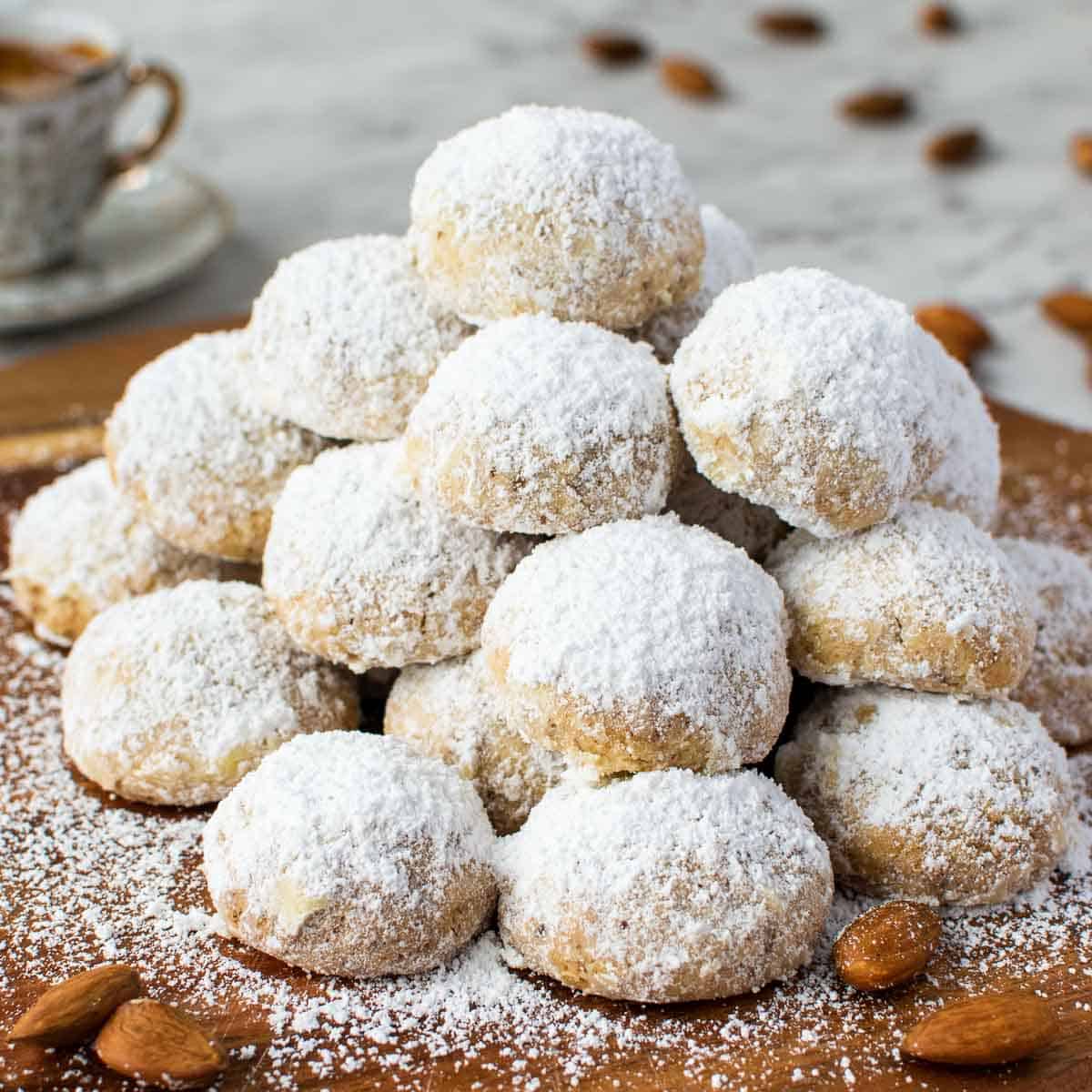
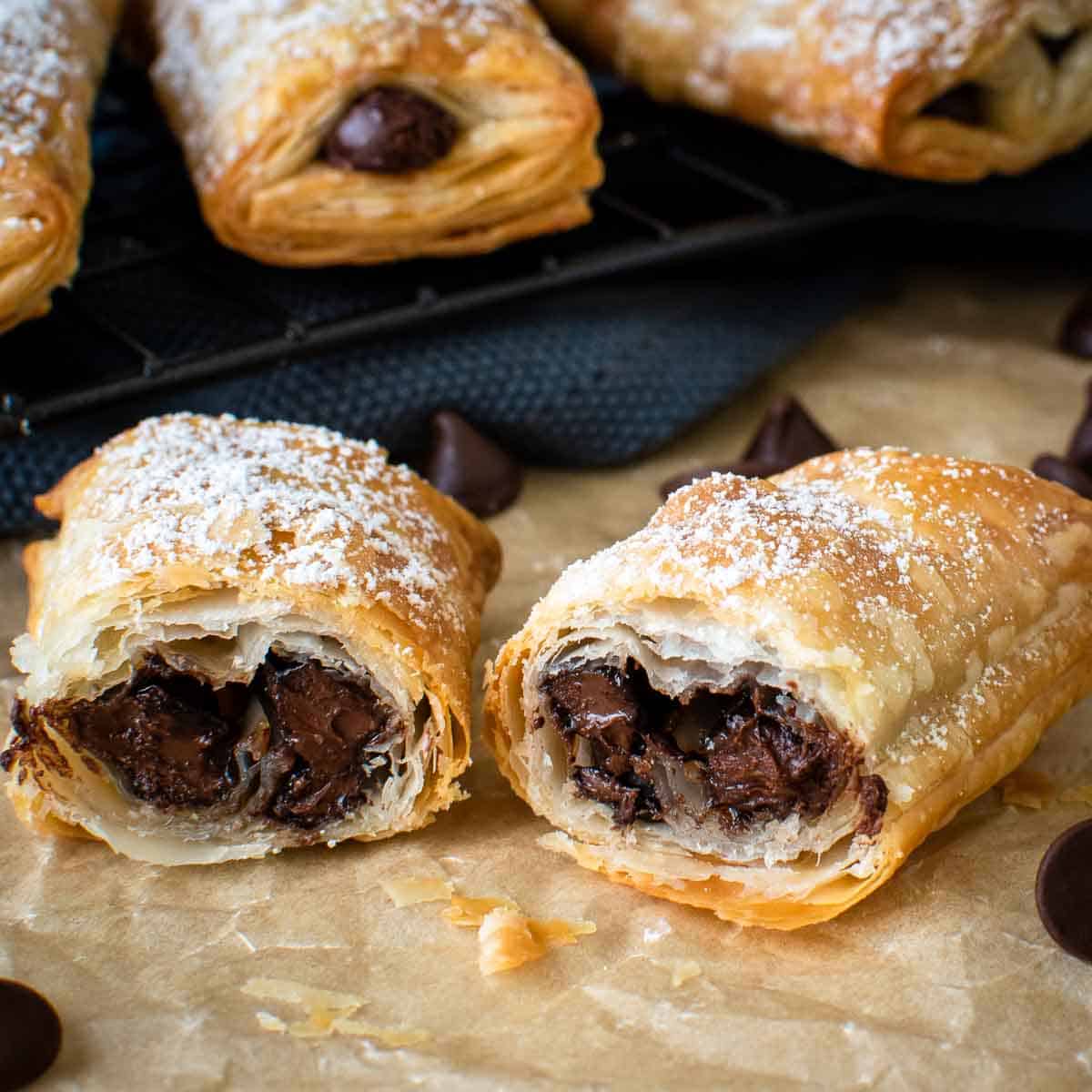
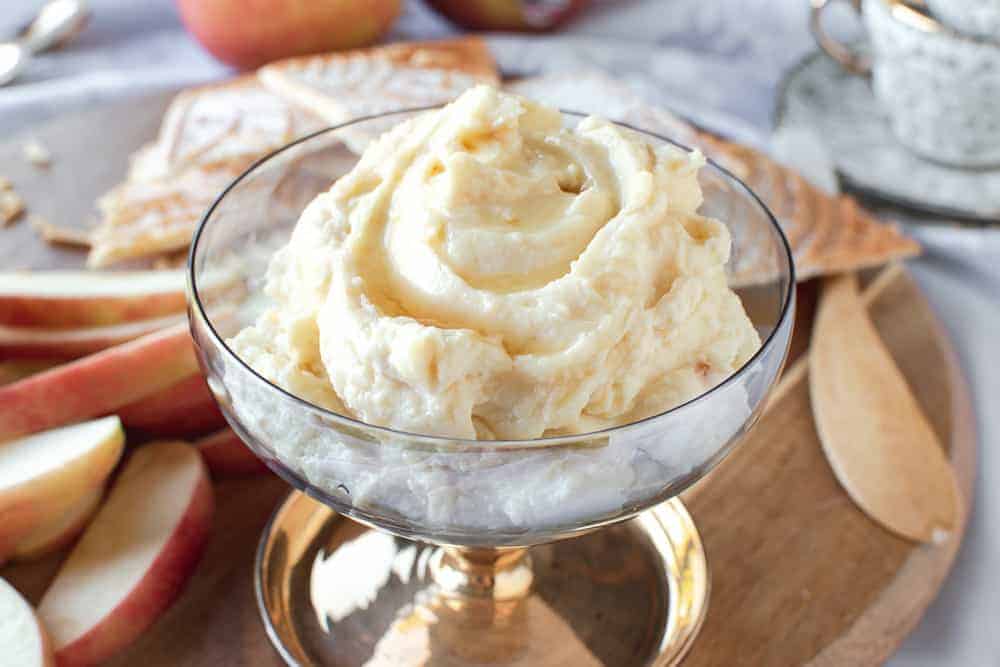
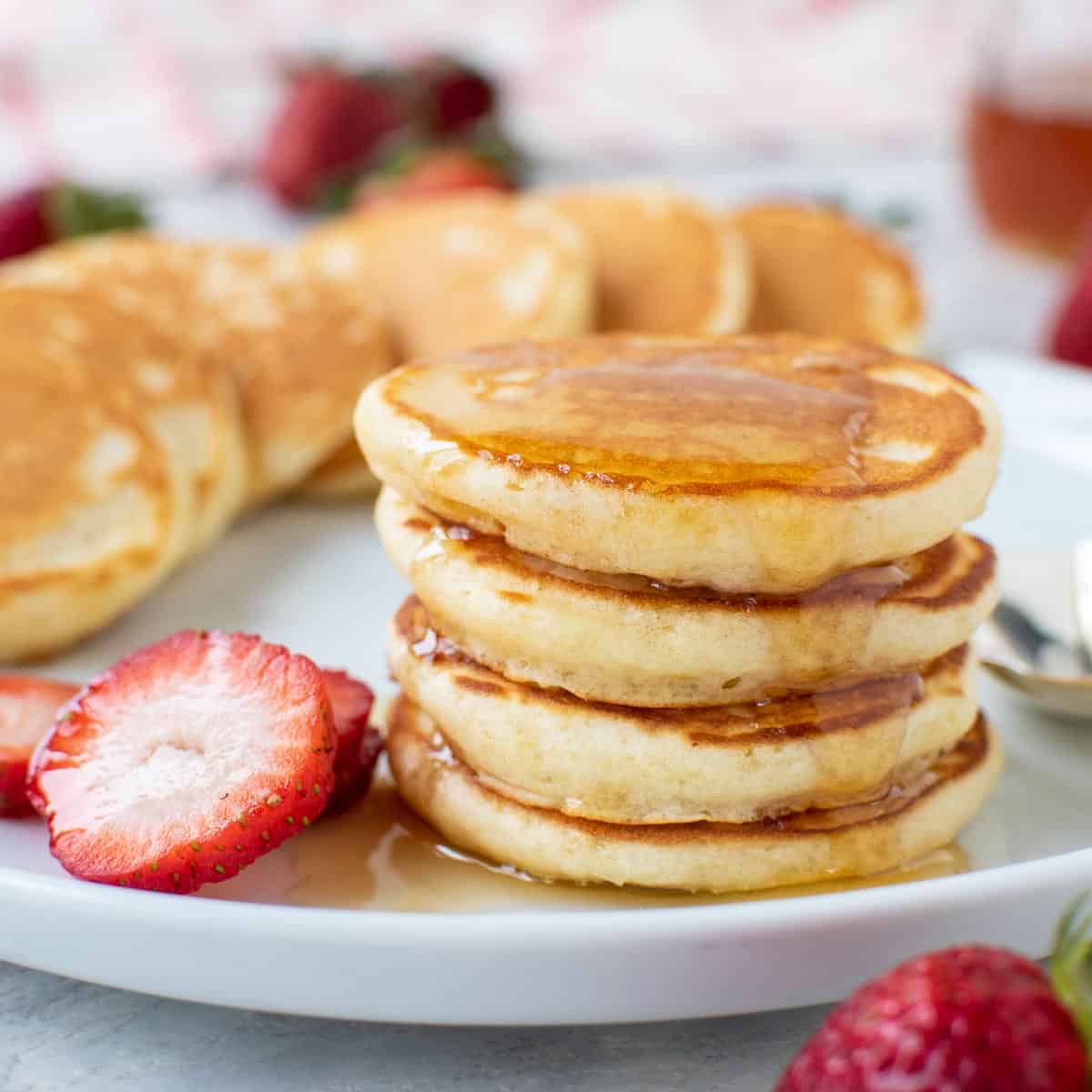
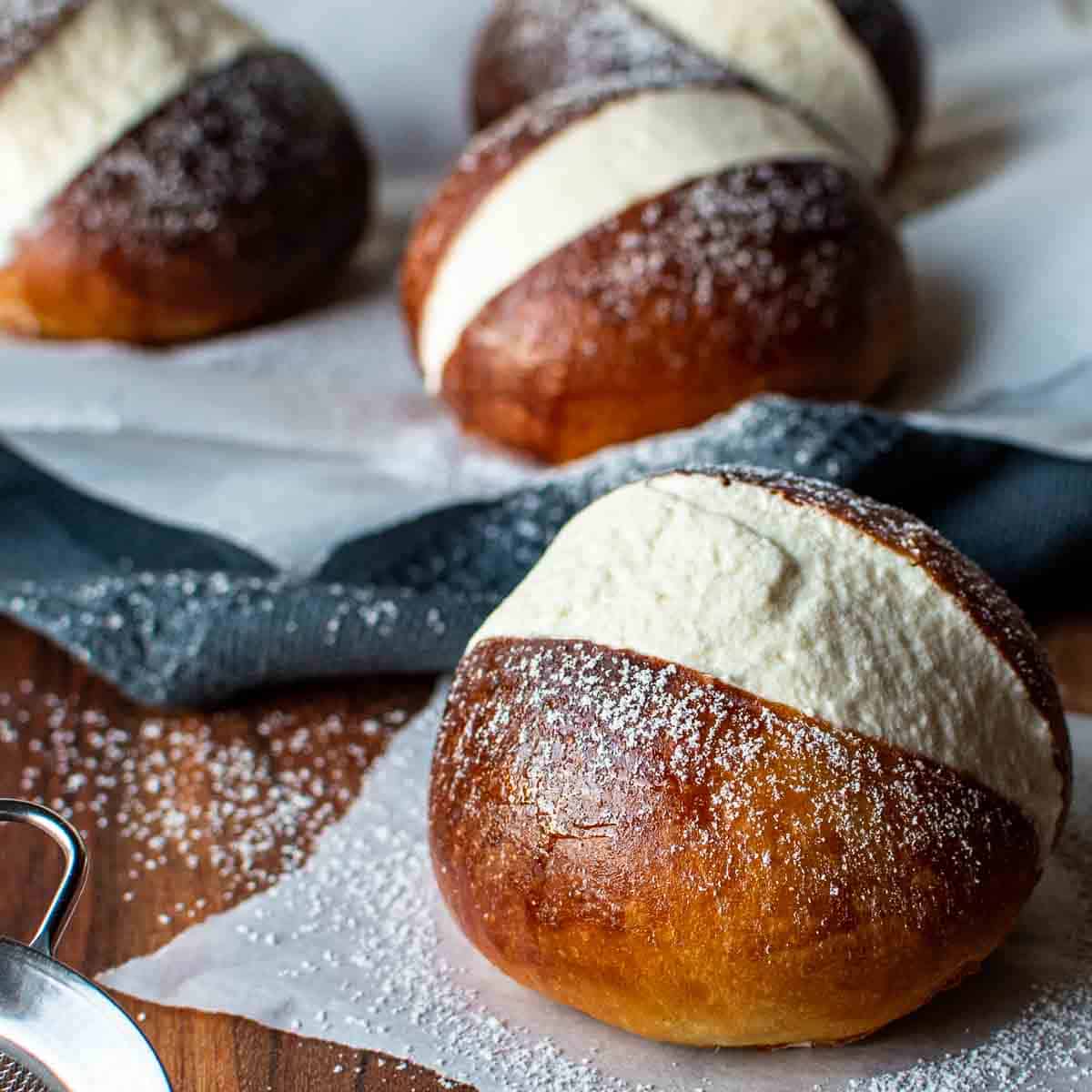
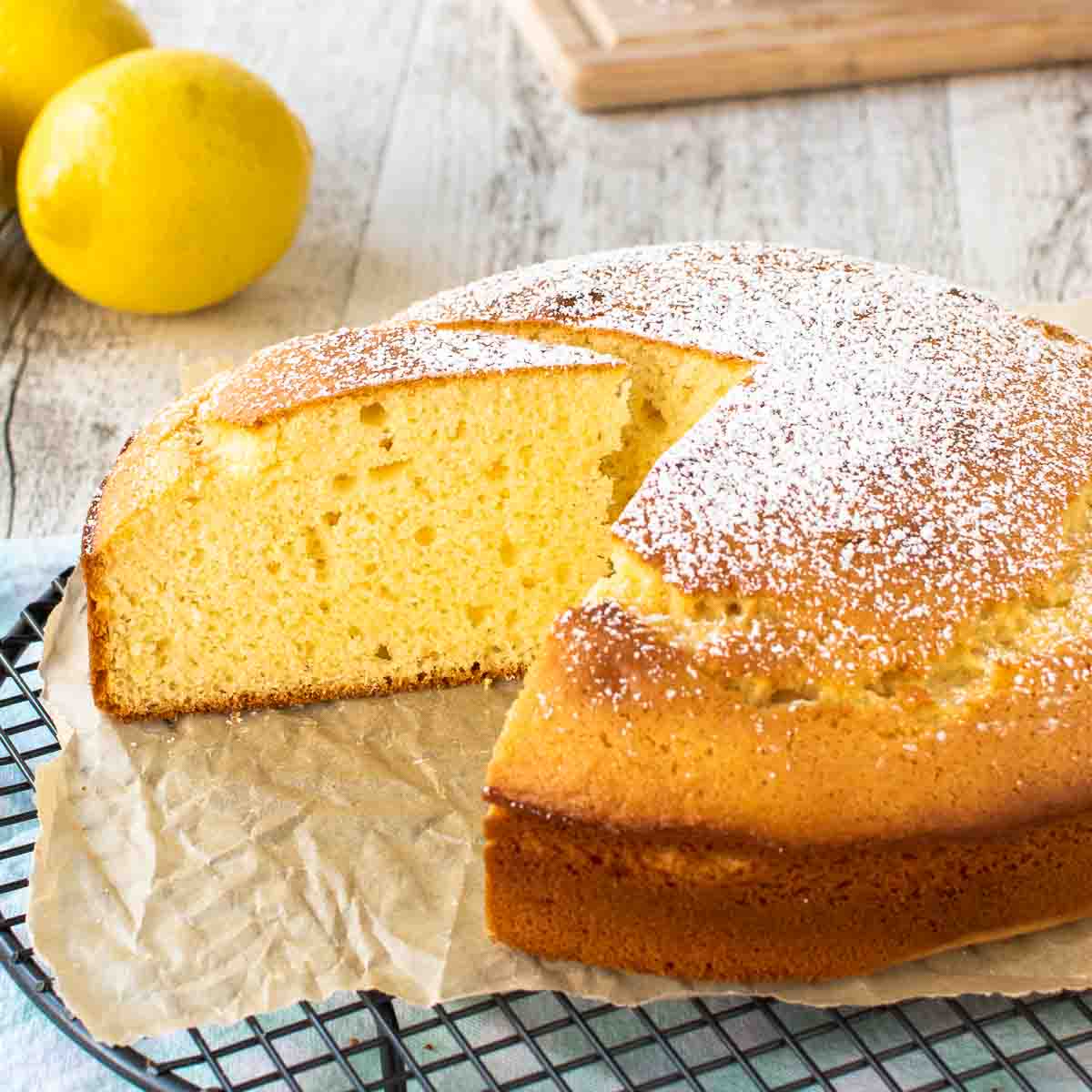
Can Crisco shortening be used instead of lard for this recipe?
No I wouldn’t use Crisco. But you could use all butter instead if you’d rather not use lard.
All your photos are gorgeous but that shot of you stretching the dough is crazy good! You did such a great job on this, I'm so glad you like it. It's tough at first but once you get the hand of it you can really crank them out. Super job!!Best, Sandie
What a gorgeous job you did with these! This was a most daring challenge and it seems fitting that Lis was able to introduce this one last daring challenge for us.
Ooooh, they look amazing!!
Oh my gosh, your dough was so smooth and beautiful – that is amazing! And the finished sfogliatelle look so flaky and delicious – so impressive!